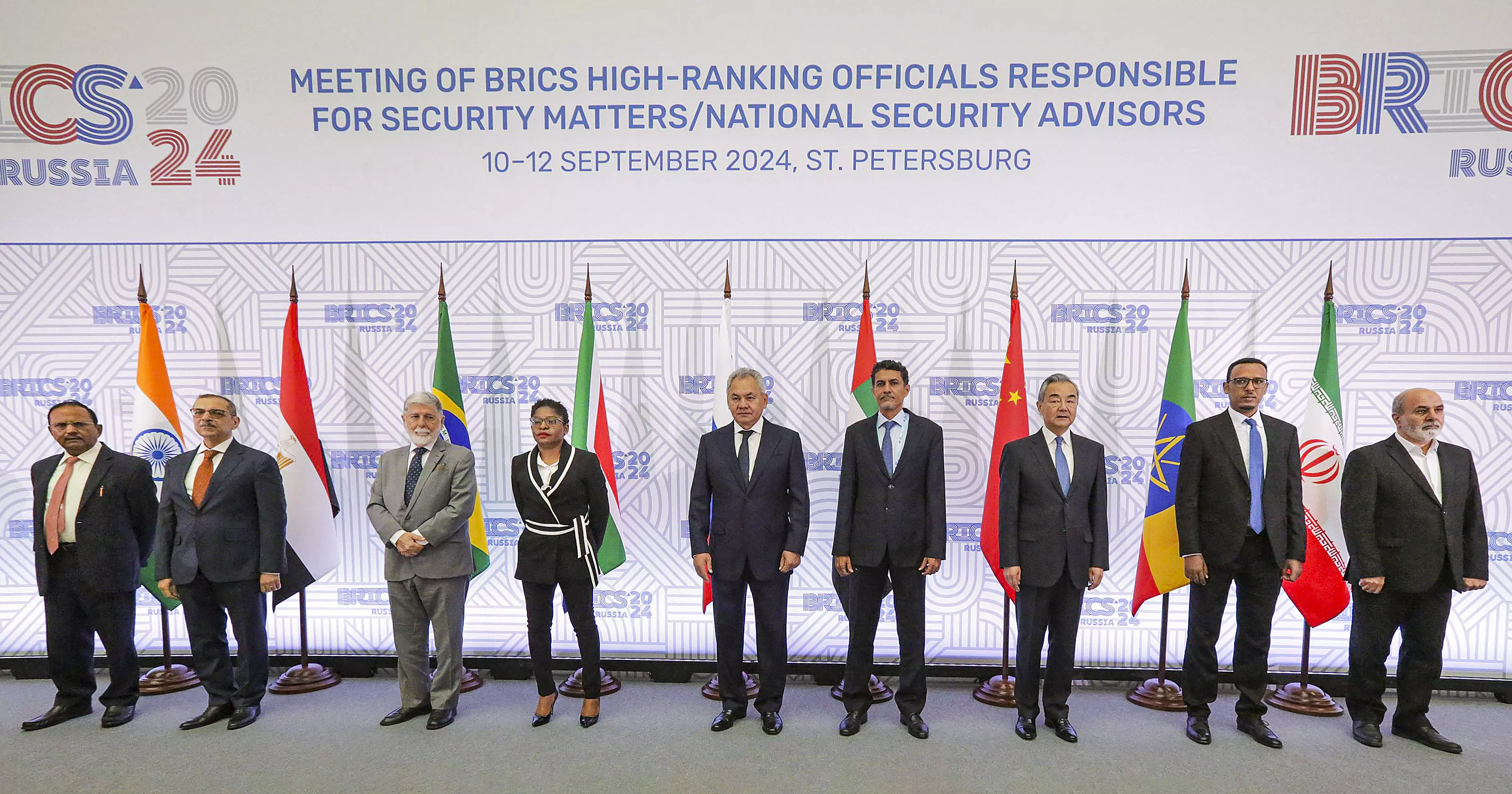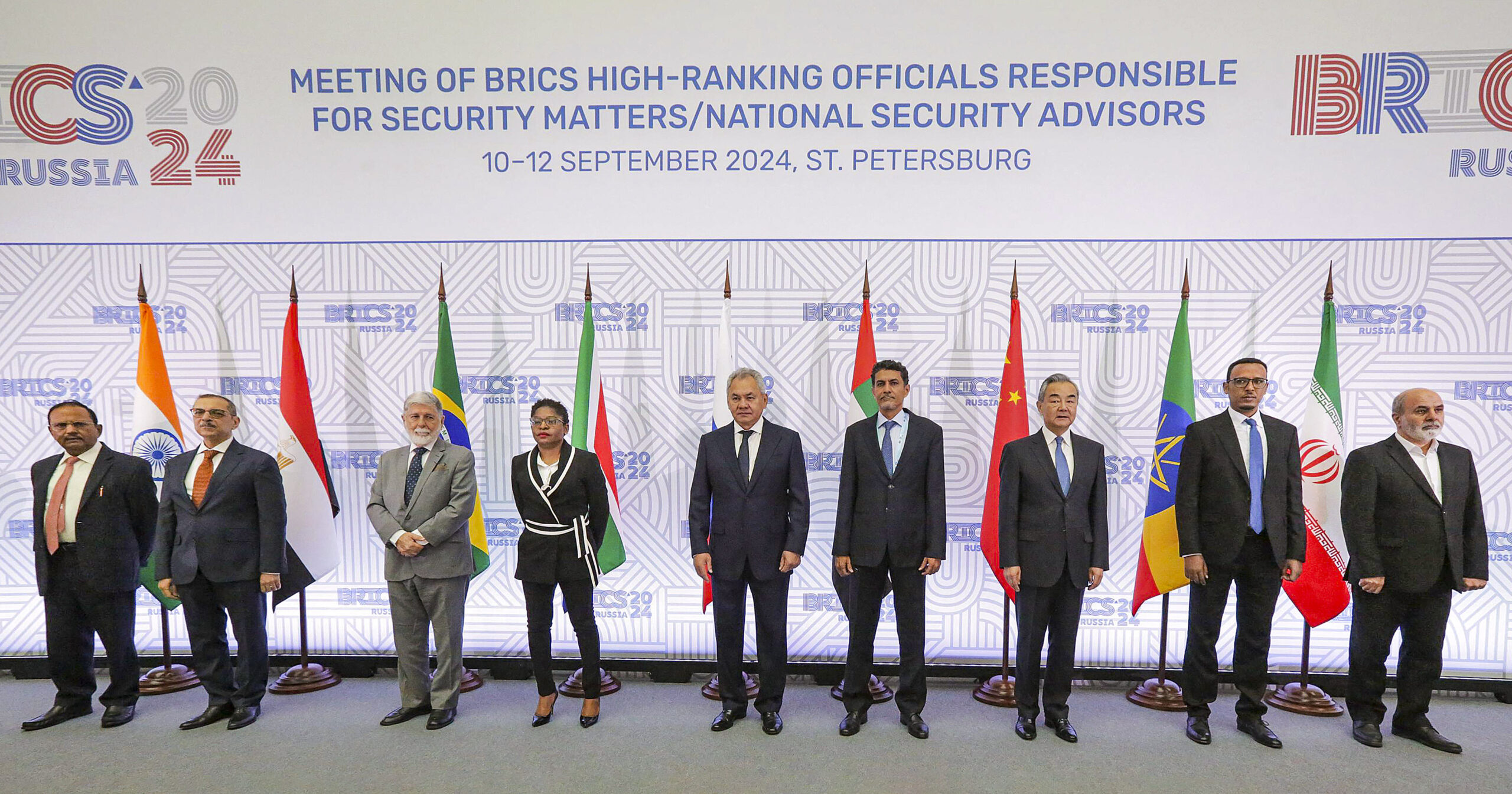
The 16th Brics summit, held in Kazan, Russia, on October 22-24, is the talk of the town. Brics (Brazil, Russia, India, China and South Africa) is an inter-governmental body for the promotion of multilateralism, peace, security and economic development. Its first summit in 2009 included founding members Brazil, Russia, India and China, with South Africa joining a year later. Brics expanded this year to include four new members, and 30 more nations have applied for membership. Talks were held this year for an alternative financial model to challenge the West-led Bretton Woods global monetary system, comprising the International Monetary Fund and World Bank, as well as a push for a united front to advocate for United Nations Security Council reforms.
So, is Brics poised to become the cool new Global South club — or is it a harbinger of a stridently anti-Western world order?
For Russian President Vladimir Putin, the Brics summit was an obvious opportunity to push back against Western sanctions over Russia’s invasion of Ukraine, including Washington’s efforts to choke off financial supplies to Moscow, and to lobby for support from the Global South. Pertinently, the “Global South” is not just a geographical but a geopolitical and socio-economic grouping. Many Global South nations are in the Southern Hemisphere, in Asia, Africa and Latin America, often sharing colonised histories that led to economic exploitation for centuries. That many of these emerging economies did not blacklist Russia has been misinterpreted by some Western analysts as the Global South’s backing for Moscow’s Ukraine policy. Instead, it more accurately reflects a growing disenchantment with the West, a tacit critique of what many erstwhile colonised nations see as Western double standards on wars and imperialism, and the selective (mis)use of human rights for other agendas, therefore pursuing their own politico-economic interests as non-aligned nations.
Or multi-aligned, when it comes to India’s international relations. Fellow Indians of varying political beliefs hold diverse opinions on Nato, but I have not met anyone who approves of Russia’s invasion. Rather, there is a sense of a historical friendship with Russia among many, that Moscow has not harmed India’s interests, and a refusal to bear the costs of a war created by others. From a geo-strategic viewpoint, given the strengthening Russia-China partnership, a continued relationship with Moscow is useful for India to counter-balance Chinese expansionism in the Indo-Pacific. Following the recent breakthrough border agreement between India and China ahead of the Brics summit, there is speculation in some quarters that Moscow may have lent a helping hand to defuse hostilities between the two Asian giants. Under this Sino-Indian agreement, outstanding issues simmering since the 2020 Galwan Valley clashes are being resolved, with both sides agreeing to a patrolling arrangement allowing for the return of Indian troops to what became friction points on the Line of Actual Control (LAC). In what is a major diplomatic win for India, tensions in Demchok and Depsang in eastern Ladakh have been addressed with military de-escalation in these areas.
With this well-timed beginning to the summit, followed by a meeting of prominent leaders from the Global South, the worldwide interest generated by Brics is unsurprising.
Some critiques have also been directed at how Brics is a very loose formation of nations with vastly diverging interests. While Beijing and Moscow see Brics as a platform to challenge the Western-led world order in general, and the dominance of the American dollar in particular, this is not the case with India, which is not anti-West and sees Brics as an alternative outfit to better support and negotiate for the concerns of the Global South, as compared to elite clubs such as the G-7 which were not designed to advocate for emerging economy perspectives.
While Brics membership is less homogenous than the G-7, whose members all meet common developmental criteria, even the G-7 is not unmarked by internal disagreements. Examples are some of France’s foreign policy positions independent of the United States, as on the Israel-Palestine war, or Italy’s policy disagreements with France, as on not sending domestic troops to fight in the Russia-Ukraine war. Yet the G-7 has, despite such internal dissent, been able to focus on a larger vision, consolidating the group’s economic and geopolitical power over time. This is the bigger challenge ahead for Brics. That there is a tremendous need to advocate for emerging economy perspectives so that powerful blocs do not unilaterally dictate terms to the Global South is apparent from the sheer number of countries applying for Brics membership. Now the group will need a clearer vision. Will there be any economic requirements (such as GDP levels) for entry into Brics? Will smaller member-nations that are attacked be diplomatically supported in peace efforts and provided humanitarian aid?
Countries in the Global South have historically been criticised for having weak democratic institutions, but the truth is that democracy in the West also needs strengthening.
Brics as a non-Western body can shape a more representative global order, with the caveat that a just, democratic world is challenging to build with authoritarian states or those which promote terrorism. Peace and security are objectives of Brics, yet some members have long been under strife, with vulnerable populations being greatly impacted. My public commentaries and lectures have, for years, analysed gender violence in war, such as the decades-long US-Russia war over Afghanistan, with the Soviet invasion of 1979 followed by American Cold War era foreign policies on arming religious extremists, resulting in the rise of the Taliban, with disastrous consequences for socio-economic development and women’s rights in Afghanistan. Another example is how the real threat of wartime rape in some Global South nations like Syria results in families marrying off girls aged ten or twelve, compounding high regional maternal and infant mortality rates. As Brics is being celebrated by the developing world, the Women, Peace and Security Agenda to mainstream gender into peace and security multilateral architecture has also recently celebrated its 24th anniversary. The point is that the economic and social indicators of development often work better together.
India-US collaboration to counter Chinese military aggression in the Indo-Pacific will continue under Donald Trump, whose recent victory in the US presidential election will have other far-reaching policy consequences, including US involvement in the two global wars. A democratic India that can unite Brics to reflect non-Western development aspirations and draw upon strategic relationships with the Western and Russia-China blocs to provide diplomatic, humanitarian support to end wars justly will be very well-positioned to play a leading role for Brics, the Global South, and the world.
